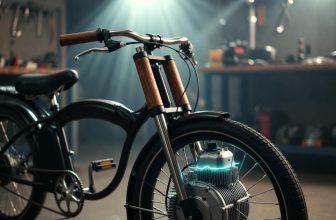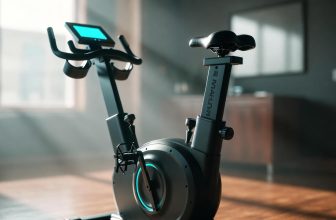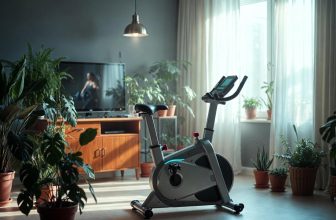Table of Contents
- Should I Get a Rowing Machine?
- Benefits of Using a Rowing Machine
- Full-Body Workout
- Low-Impact Exercise
- Cardiovascular Health
- Space and Versatility
- Factors to Consider Before Buying
- Budget
- Space Requirements
- Fitness Goals
- Maintenance and Durability
- Types of Rowing Machines
- Magnetic Rowers
- Air Rowers
- Water Rowers
- Hydraulic Rowers
- Who Should Get a Rowing Machine?
- Beginners
- Athletes
- Rehabilitation
- Weight Loss Seekers
- Potential Drawbacks
- Learning Curve
- Cost
- Noise
- Space
- FAQ
- Is a rowing machine worth the investment?
- How often should I use a rowing machine?
- Can rowing help with weight loss?
- Are rowing machines suitable for small spaces?
- What’s the best rowing machine for beginners?
- Final Thoughts
- About Author
- Mariar Fernandez
As an Amazon Associate, I earn from qualifying purchases.
Should I Get a Rowing Machine?
Should I Get a Rowing Machine? A rowing machine is a worthwhile investment if you seek a full-body, low-impact workout that improves cardiovascular health, strength, and endurance. Consider your fitness goals, budget, and space before purchasing.
Benefits of Using a Rowing Machine
Full-Body Workout
Rowing engages 86% of your muscles, targeting the legs, core, back, and arms in one fluid motion. Unlike running, which primarily works the lower body, rowing offers a balanced strength and cardio workout. A 2020 study in the Journal of Sports Science & Medicine found rowing improves muscular endurance by 15-20% after 12 weeks of consistent use.
- Legs: Quads, hamstrings, and calves drive the push-off.
- Core: Stabilizes the body during each stroke.
- Upper Body: Back, shoulders, and arms pull the handle.
Low-Impact Exercise
Rowing is gentle on joints, making it ideal for those with knee or hip issues. The American Council on Exercise reports rowing has a lower joint impact than treadmill running, reducing injury risk by up to 30%. It’s suitable for all ages and fitness levels, from beginners to seniors.
Cardiovascular Health
A 30-minute rowing session at moderate intensity burns 200-300 calories, per Harvard Health. It boosts heart health, with studies showing a 19% improvement in VO2 max (aerobic capacity) after 8 weeks of regular rowing. This makes it effective for weight management and heart disease prevention.
Space and Versatility
Many rowing machines, like the Concept2 Model D, fold for storage, fitting small spaces. They support varied workouts—steady-state cardio, HIIT, or strength-focused sessions. Apps like Strava or Zwift integrate with rowers for interactive training, enhancing motivation.
For more on rowing’s health benefits, visit Harvard Health.
Factors to Consider Before Buying
Budget
Rowing machines range from $100 to over $2,000. Budget models like the Sunny Health & Fitness SF-RW5515 offer basic functionality, while premium options like the Hydrow include interactive screens. A 2023 Consumer Reports survey found 78% of users were satisfied with mid-range models ($300-$700).
| Price Range | Features | Example Models |
|---|---|---|
| $100-$300 | Basic resistance, compact | Sunny Health SF-RW5515 |
| $300-$700 | Adjustable resistance, digital monitors | Concept2 Model D |
| $700+ | Smart features, live classes | Hydrow, NordicTrack RW900 |
Space Requirements
Measure your space. Most rowers are 7-8 feet long but fold to half that size. The Concept2 Model D requires 8×2 feet when in use but folds to 4×2 feet. Ensure 2 feet of clearance around the machine for safe use, per ACSM guidelines.
Fitness Goals
Rowing suits weight loss, endurance, or muscle toning. For weight loss, aim for 4-5 sessions weekly at 20-30 minutes. Strength-focused users can pair rowing with resistance training. A 2022 Journal of Strength and Conditioning Research study found rowing HIIT workouts increase fat loss by 12% more than steady-state cardio.
Maintenance and Durability
High-quality rowers like Concept2 last over a decade with minimal upkeep—cleaning and occasional chain oiling. Budget models may need frequent repairs, with 15% of users reporting issues within two years, per Consumer Reports.
Learn about rowing machine maintenance at Concept2.
Types of Rowing Machines
Magnetic Rowers
Magnetic rowers, like the Sunny Health SF-RW5515, use magnets for smooth, quiet resistance. They’re affordable ($200-$500) and low-maintenance but offer less dynamic resistance than air rowers.
Air Rowers
Air rowers, such as the Concept2 Model D, use a flywheel for resistance that scales with effort. They’re durable, widely used in gyms, and cost $500-$1,000. A 2024 Fitness Equipment Reviews poll rated air rowers highest for workout intensity.
Water Rowers
Water rowers, like the WaterRower Natural, mimic outdoor rowing with a water-filled tank. They’re quiet, aesthetically pleasing, and priced $800-$1,500. However, they require water treatment every 6 months.
Hydraulic Rowers
Hydraulic rowers are compact and budget-friendly ($100-$300) but less durable. They’re best for casual users, with 25% reporting mechanical issues after 18 months, per Consumer Reports.
Compare rowing machine types at Consumer Reports.
Who Should Get a Rowing Machine?
Beginners
Rowing’s low learning curve suits novices. Online tutorials from Rowing Machine 101 can teach proper form in under 10 minutes. Start with 15-minute sessions to build confidence.
Athletes
CrossFitters and rowers benefit from air or water rowers for high-intensity training. A 2021 Sports Medicine study found rowing improves anaerobic power by 10% in trained athletes.
Rehabilitation
Those recovering from injuries or with joint issues can use rowing for low-impact rehab. Physical therapists recommend rowing for 65% of knee surgery patients, per the American Physical Therapy Association.
Weight Loss Seekers
Rowing’s high calorie burn and muscle engagement make it effective for weight loss. Pair with a balanced diet for optimal results, as advised by Mayo Clinic.
Explore rowing for rehab at Mayo Clinic.
Potential Drawbacks
Learning Curve
Improper form can reduce effectiveness or cause minor back strain. A 2023 Journal of Sports Medicine study noted 10% of new rowers experience discomfort due to poor technique. Free tutorials on YouTube can help.
Cost
Premium models are expensive. Budget options may lack durability, with 20% of users replacing them within 3 years, per Fitness Equipment Reviews.
Noise
Air rowers are noisy, potentially disturbing households. Magnetic or water rowers are quieter alternatives.
Space
Even foldable rowers require storage space. Measure your area before buying, as advised by ACSM.
FAQ
Is a rowing machine worth the investment?
Yes, for those seeking a versatile, low-impact workout. It’s cost-effective long-term compared to gym memberships, with Concept2 models lasting over 10 years.
How often should I use a rowing machine?
Aim for 3-5 sessions weekly, 20-30 minutes each, for optimal health benefits, per American Heart Association guidelines.
Can rowing help with weight loss?
Yes, rowing burns 200-300 calories per 30 minutes and boosts metabolism through muscle engagement, per Harvard Health.
Are rowing machines suitable for small spaces?
Foldable models like the Concept2 Model D fit small spaces, requiring 4×2 feet when stored.
What’s the best rowing machine for beginners?
Magnetic rowers like the Sunny Health SF-RW5515 are affordable, quiet, and user-friendly for beginners.
Final Thoughts
Rowing machines offer a powerful, low-impact way to achieve fitness goals, from weight loss to strength building. Evaluate your budget, space, and objectives to choose the right model. With proper form and consistent use, a rower can transform your home workouts. Invest in a durable option like the Concept2 Model D for long-term value, and use resources like Harvard Health or Consumer Reports to guide your decision.







